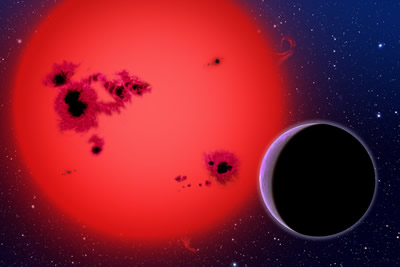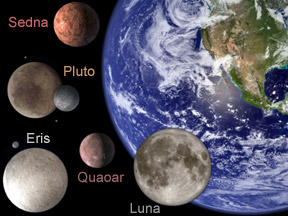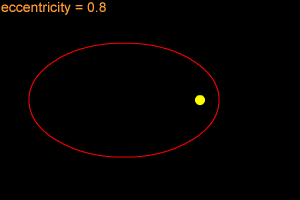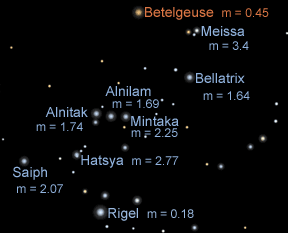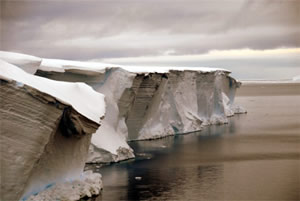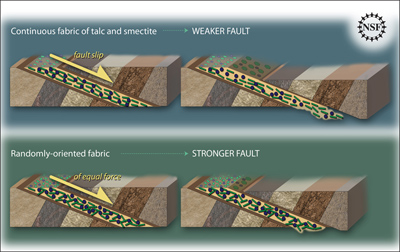Click on image for full size
Image Courtesy of David Aguilar, Harvard-Smithsonian CfA
Waterworld Discovered Orbiting a Nearby Star
News story originally written on December 16, 2009
Astronomers have discovered a planet about 40 light-years from Earth that contains water. They describe this planet as a "super-Earth" planet because it is between one and ten times the mass of the Earth. Although the super-Earth is too hot to sustain life, it is much smaller, cooler, and more Earthlike than any other planet that has been discovered outside our solar system.
They discovered the super-Earth, also called GJ1214b, using ground-based telescopes that are the same size as telescopes many non-scientists have in their backyards. GJ1214b orbits a red dwarf star called GJ1214. This star is about one-fifth the size of the Sun. It has a surface temperature of only about 4,900 degrees F and is only three-thousandths as bright as the Sun.
GJ1214b orbits its star once every 38 hours at a distance of only 1.3 million miles. Astronomers think the planet's temperature is about 400 degrees Fahrenheit. They think GJ1214b is composed of about three-fourths water and other ices, and one-fourth rock. There are also exciting hints that the planet has a gaseous atmosphere.
"Since we found the super-earth using a small ground-based telescope, this means that anyone else with a similar telescope and a good CCD camera can detect it too. Students around the world can now study this super-earth!" said David Charbonneau of CfA, lead author and head of the MEarth project.
The next step for astronomers is to try to learn more about the atmosphere, which will require a space-based instrument like NASA's Hubble Space Telescope. "Since this planet is so close to Earth, Hubble should be able to detect the atmosphere and determine what it's made of," said Charbonneau. "That will make it the first super-Earth with a confirmed atmosphere--even though that atmosphere probably won't be hospitable to life as we know it."


